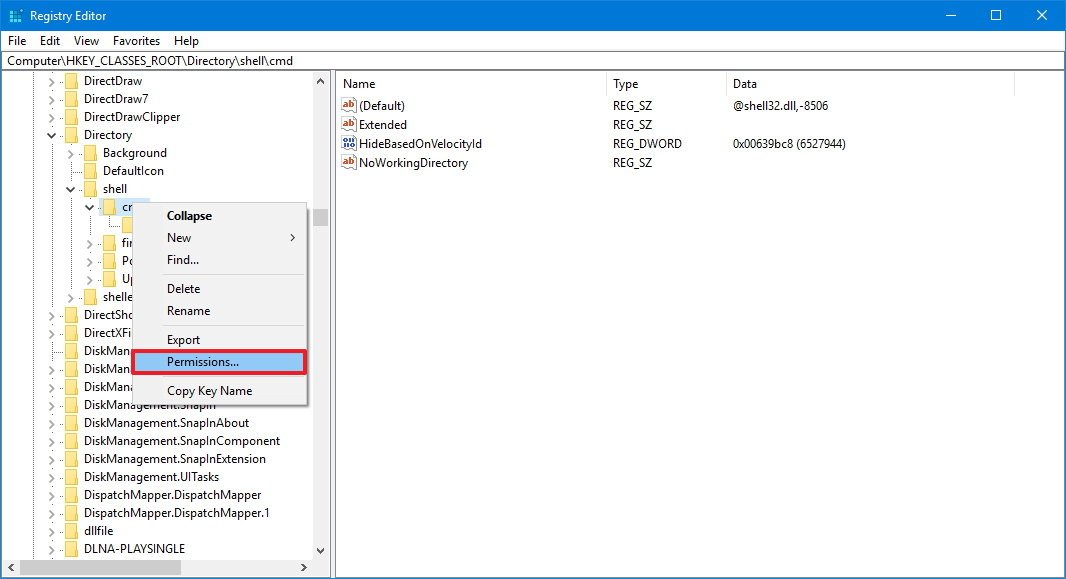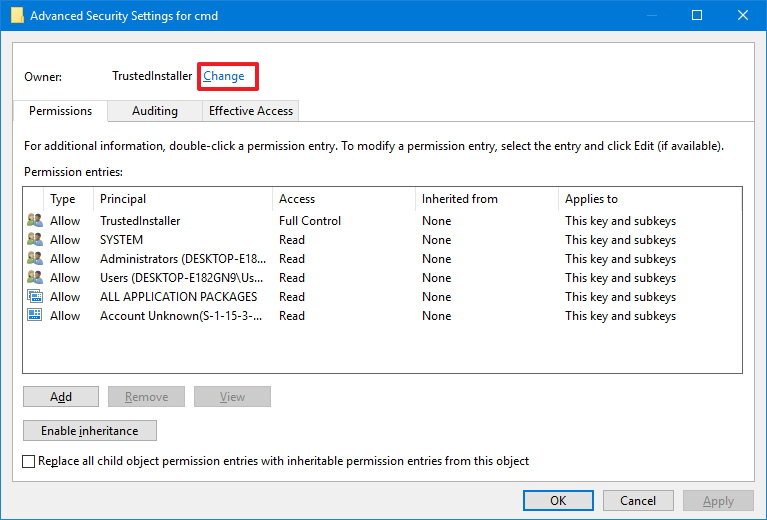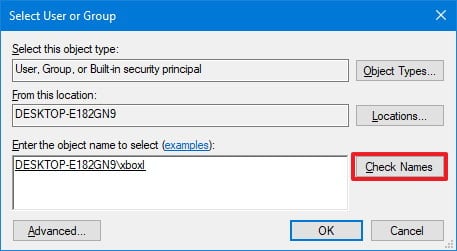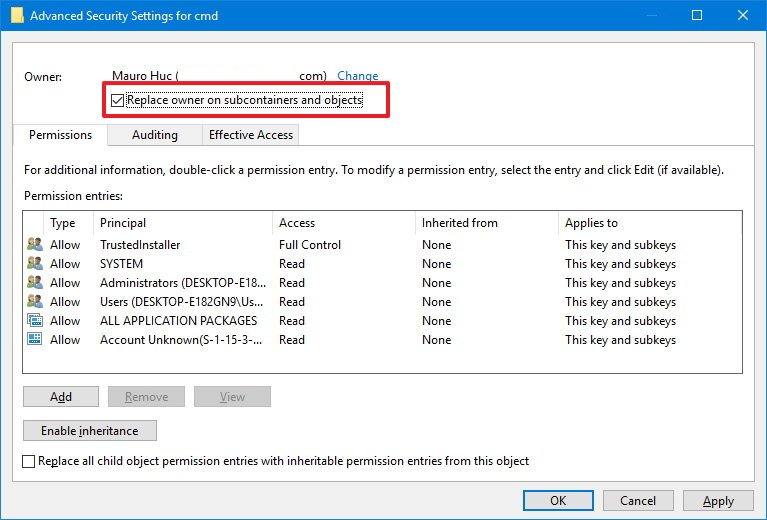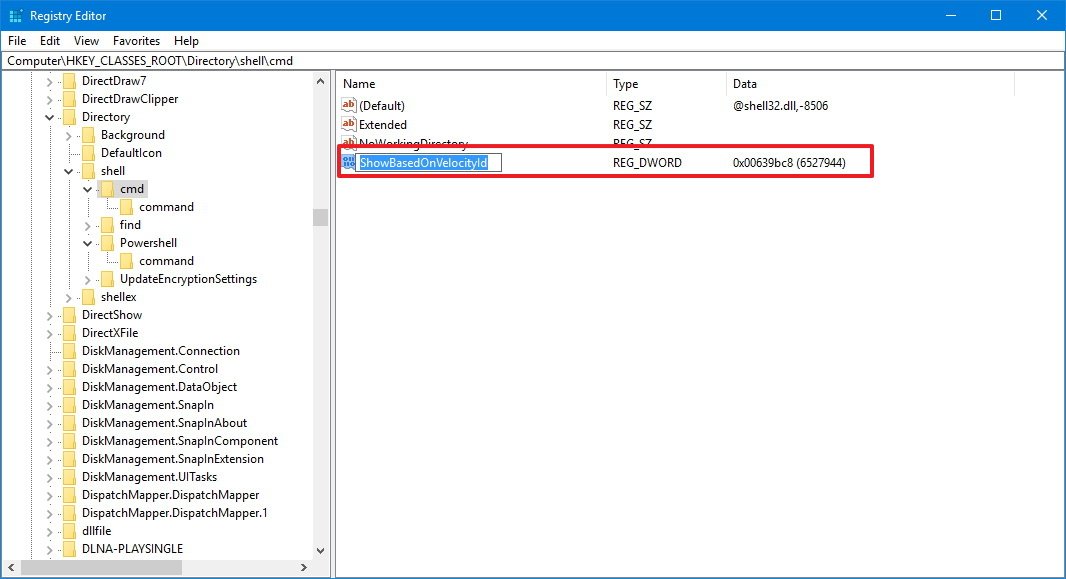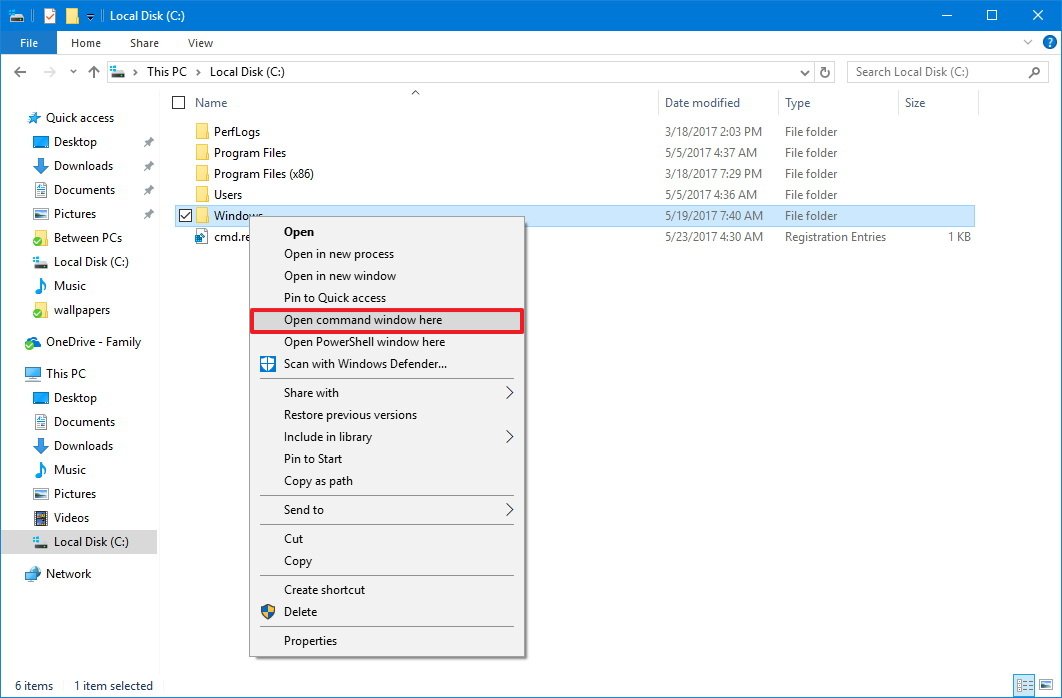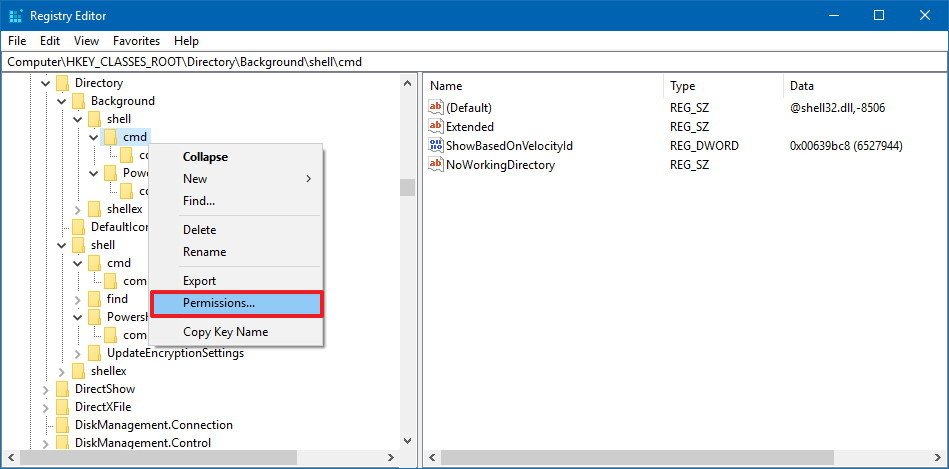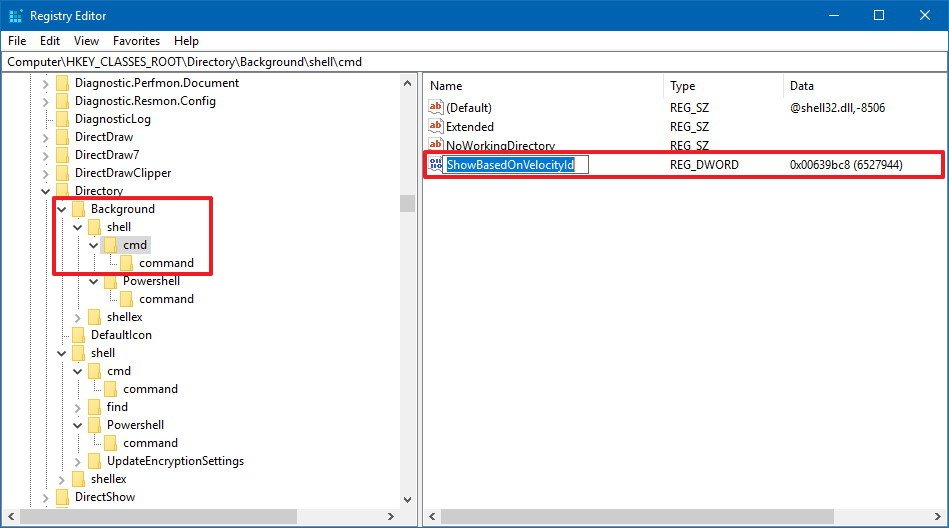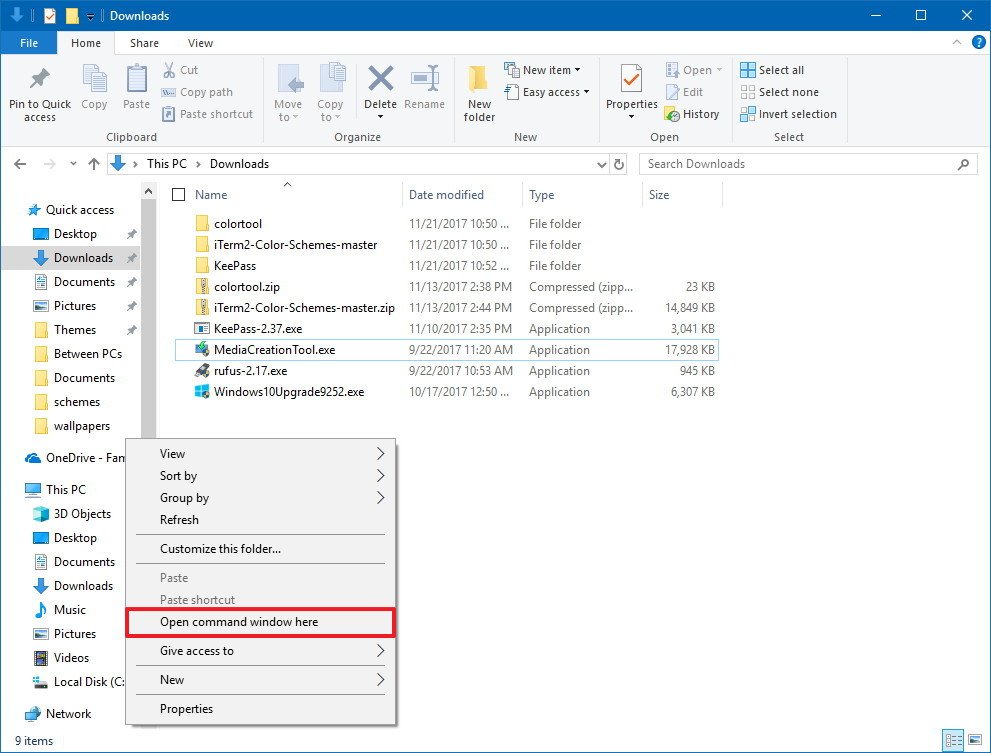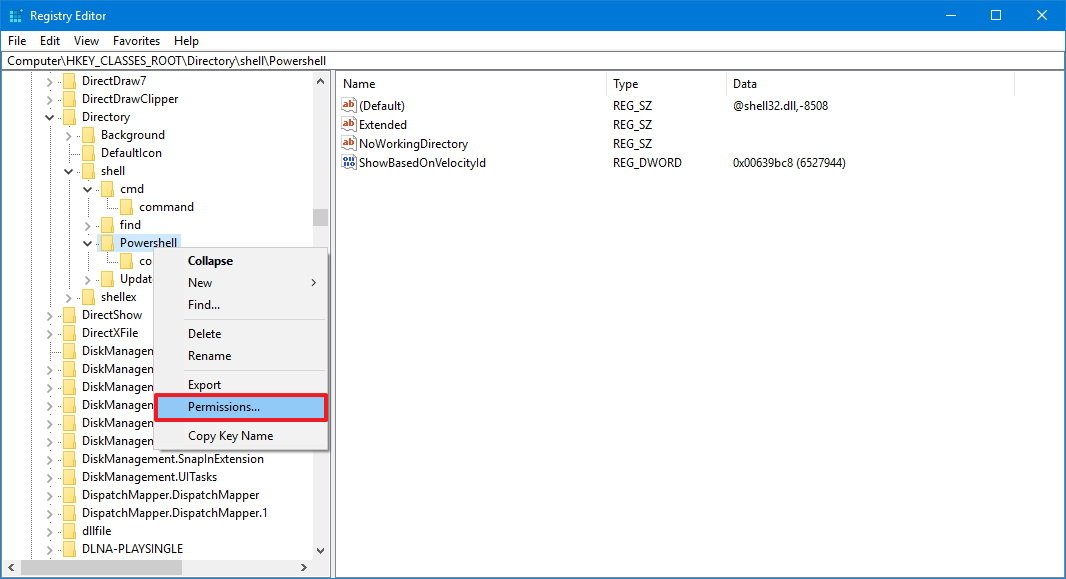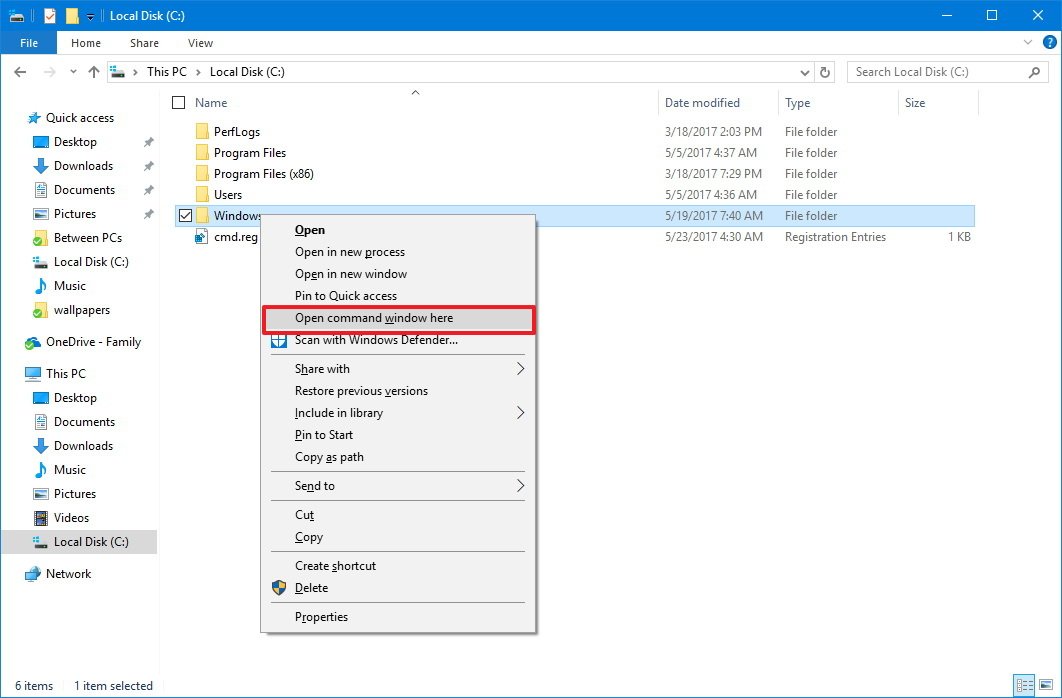How to return the 'Open command window here' option to Windows 10's context menu
You can bring back the option to launch Command Prompt from the right-click context menu on Windows 10, and in this guide we show you how.
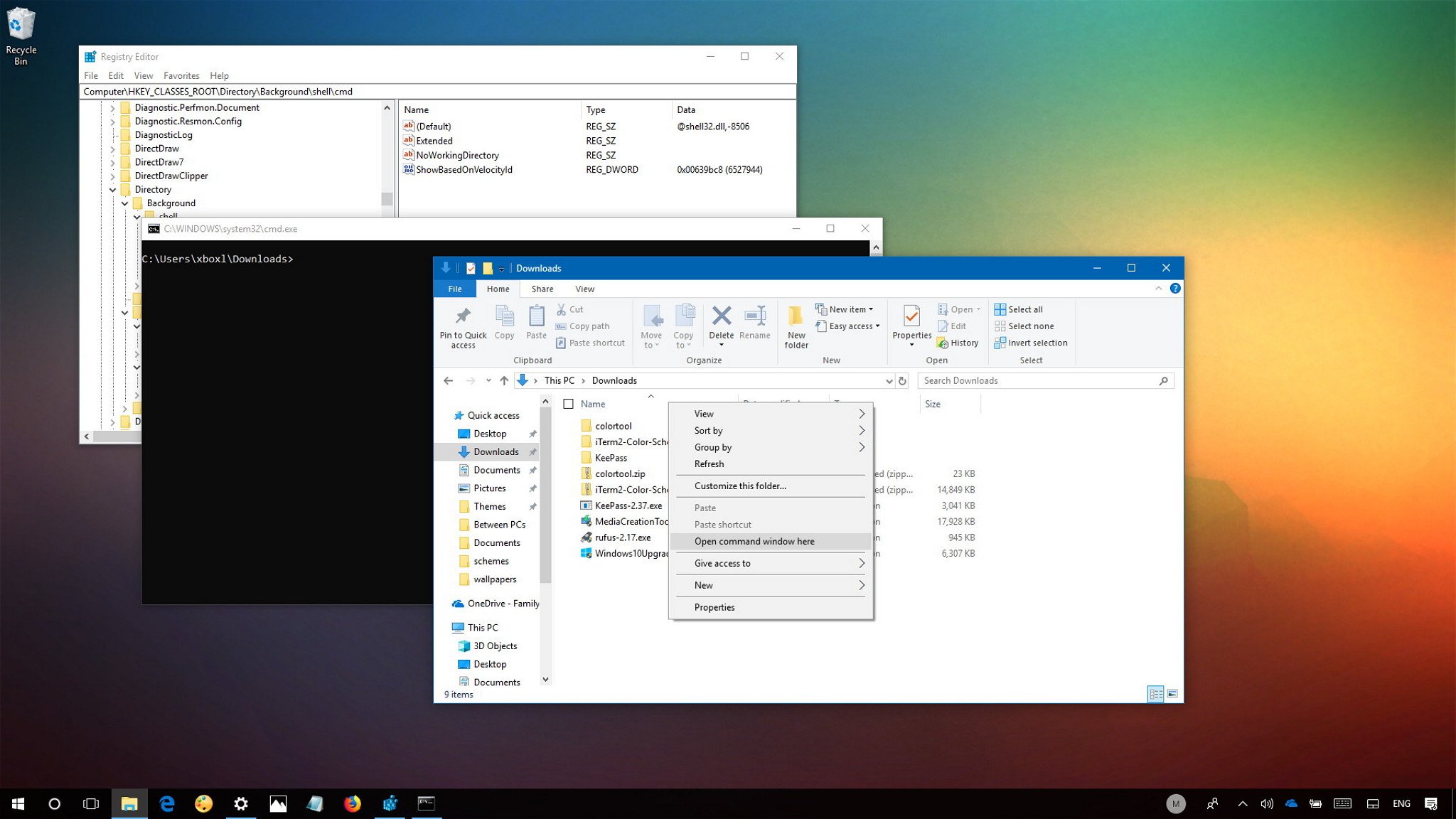
On Windows 10, Microsoft continues to fade out Command Prompt in favor of PowerShell. Although you can still use the console, you'll notice that the option is no longer available on the Power User menu (Windows key + X), on the File menu for File Explorer, or in the extended context menu (Shift + Right-click).
While there is an option in the Settings app to add Command Prompt to the Power User menu, you won't find an option to bring it back to the extended context menu. However, it's still possible to re-incorporate the option in Windows 10, if you're comfortable modifying the Registry.
In this Windows 10 guide, we walk you through the steps to bring back the "Open command window here" option to the context menu.
How to add 'Open command window here' to the context menu
Adding the "Open command window here" to the extended-folder context menu is a two-step process. First, you need to bring back the option when you open the menu when right-clicking a folder, and second, using similar steps, you need to return the option when right-clicking the background of a folder.
Adding 'Open command window here' to the folder context menu
In order to re-incorporate the option to launch Command Prompt on the extended context menu, you'll need to modify the Registry using the following steps:
Warning: This is a friendly reminder that editing the registry is risky, and it can cause irreversible damage to your installation if you don't do it correctly. We recommend making a full backup of your PC before proceeding.
If you're ready, follow these steps:
All the latest news, reviews, and guides for Windows and Xbox diehards.
- Use the Windows key + R keyboard shortcut to open the Run command.
- Type regedit, and click OK to open the Registry.
- Browse the following path:
HKEY_CLASSES_ROOT\Directory\shell\cmd - Right-click the cmd (folder) key, and click Permissions.
- Click the Advanced button.
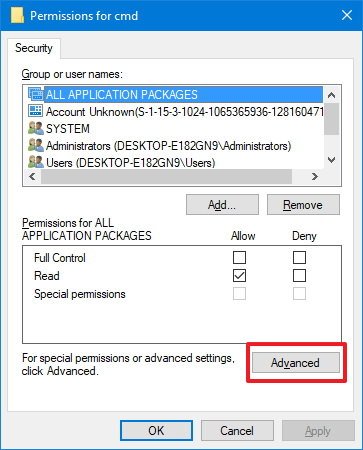
- On "Advanced Security Settings," click the Change link next to "Owner."
- Type your account name in the provided field, click Check Names to verify you're typing the account name correctly, and click OK.
- Check the Replace owner on subcontainers and objects option.
- Click Apply.
- Click OK.
- On "Permissions," select the Administrators group.
- Under "Permissions for Administrators," select Allow for the Full Control option.
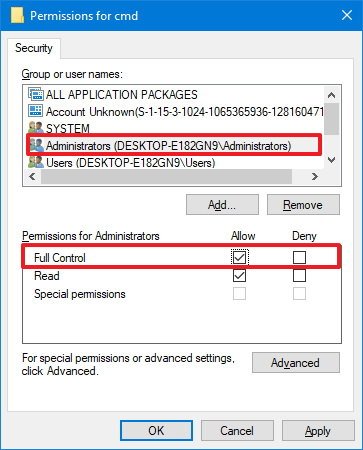
- Click Apply.
- Click OK.
- Inside the cmd (folder) key, right-click the HideBasedOnVelocityId DWORD, and click Rename.
- Change the DWORD name from HideBasedOnVelocityId to ShowBasedOnVelocityId, and press Enter.
Once you complete these steps, using the Shift + Right-click combo on a folder will display the "Open command window here" option.
At any time, you can revert the changes following the same instructions, but on step No. 16, make sure to rename the DWORD from from ShowBasedOnVelocityId to HideBasedOnVelocityId, and press Enter.
Adding 'Open command window here' to the background context menu
The instructions mentioned above add the option to open Command Prompt on the folder context menu, but not when you Shift + right-click the background of the folder that is currently open.
If you want to Shift + right-click a background to open the location using Command Prompt, you need to follow these extra steps:
- Use the Windows key + R keyboard shortcut to open the Run command.
- Type regedit, and click OK to open the Registry.
- Browse the following path:
HKEY_CLASSES_ROOT\Directory\Background\shell\cmd - Right-click the cmd (folder) key, and click Permissions.
- Click the Advanced button.
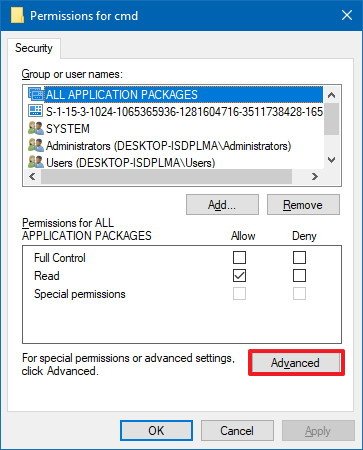
- On "Advanced Security Settings," click the Change link next to "Owner."
- Type your account name in the provided field, click Check Names to verify you're typing the account name correctly, and click OK.
- Check the Replace owner on subcontainers and objects option.
- Click Apply.
- Click OK.
- On "Permissions," select the Administrators group.
- Under "Permissions for Administrators," select Allow for the Full Control option.

- Click Apply.
- Click OK.
- Inside the cmd (folder) key, right-click the HideBasedOnVelocityId DWORD, and click Rename.
- Change the DWORD name from HideBasedOnVelocityId to ShowBasedOnVelocityId, and press Enter.
Once you complete these steps, when using the Shift + right-click combo on a folder background you will see the "Open command window here" option.
You can revert the changes following the same instructions, but on step No. 16, make sure to rename the DWORD from from ShowBasedOnVelocityId to HideBasedOnVelocityId, and press Enter.
Thanks @johannesmp (Windows Central reader) for this part of the tip!
How to remove 'Open PowerShell window here' from the context menu
You'll also notice that using the above steps will bring back the "Open command window here," but it'll keep the "Open PowerShell window here" too.
If you want to remove the PowerShell entry from the extended context menu, do the following:
- Use the Windows key + R keyboard shortcut to open the Run command.
- Type regedit, and click OK to open the Registry.
- Browse the following path:
HKEY_CLASSES_ROOT\Directory\shell\PowerShell - Right-click the PowerShell (folder) key, and click Permissions.
- Click the Advanced button.

- On "Advanced Security Settings," click the Change link next to "Owner".
- Type your account name in the provided field, click Check Names to verify you're typing the account name correctly, and click OK.
- Check the Replace owner on subcontainers and objects option.
- Click Apply.
- Click OK.
- On "Permissions," select the Administrators group.
- Under "Permissions for Administrators," select Allow for the Full Control option.
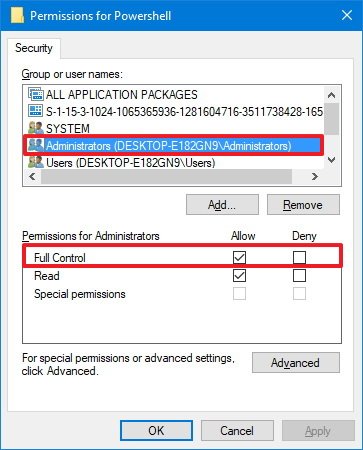
- Click Apply.
- Click OK.
- Inside the PowerShell (folder) key, right-click the ShowBasedOnVelocityId DWORD, and click Rename.
- Change the DWORD name from ShowBasedOnVelocityId to HideBasedOnVelocityId, and press Enter.
After completing these steps, using Shift + Right-click will only show the "Open command window here" option.
To bring back the PowerShell option, follow the same instructions, but on step No. 16, make sure to rename the DWORD from HideBasedOnVelocityId to ShowBasedOnVelocityId, and press Enter.
Wrapping things up
While you can run the majority of the commands using PowerShell, a lot of people still prefer Command Prompt, and the context menu option provides a quick way to open the utility in a specific location without having to type a long command to navigate to a folder path. But now, thanks to a hidden option in the Registry, you can bring that experience back to Windows 10.
More Windows 10 resources
For more help articles, coverage, and answers to common questions about Windows 10, visit the following resources:
- Windows 10 on Windows Central – All you need to know
- Windows 10 help, tips, and tricks
- Windows 10 forums on Windows Central

Mauro Huculak has been a Windows How-To Expert contributor for WindowsCentral.com for nearly a decade and has over 22 years of combined experience in IT and technical writing. He holds various professional certifications from Microsoft, Cisco, VMware, and CompTIA and has been recognized as a Microsoft MVP for many years.
